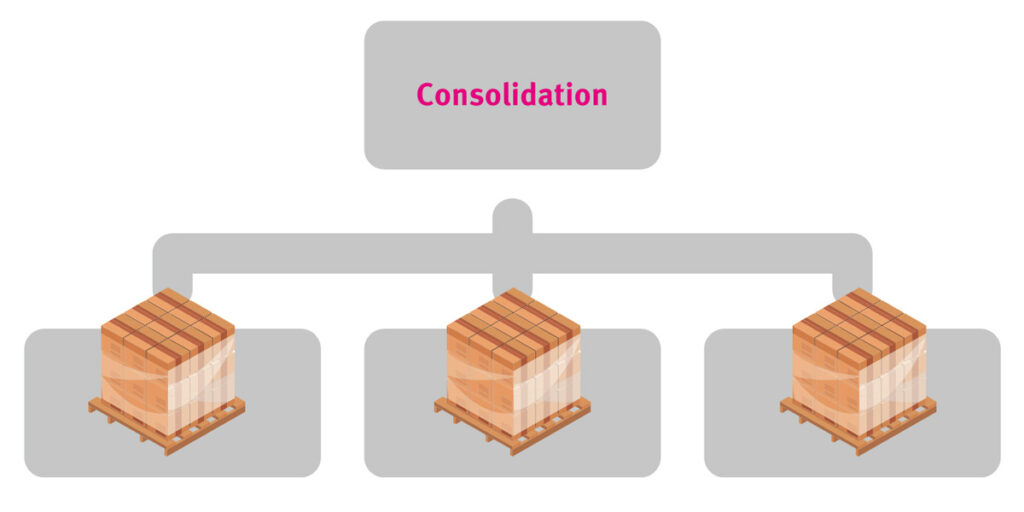Consolidation
In logistics, consolidation stands for the reorganisation and merging of individual transport goods. Thus, multiple individual loads are grouped to form a grouped load and treated as a single consignment in the subsequent transport process. Apart from uniform storage and transport, the goal is to lower the transport costs and increase productivity. The opposite of consolidation is deconsolidation.
In the warehouse, consolidation takes place at different points during the process, such as in the incoming goods area, but also during storage place management. In the transport sector, the loads of multiple customers are consolidated in grouped-load transport to optimally utilise the loading space of the means of transport. This merging simplifies the transport and makes it cheaper, especially for smaller companies, since forwarders process the goods of different customers together. In the case of grouped loads, however, the pick-up and delivery times cannot be timed as exactly as with full loads.
There are two types of consolidation. In the case of temporal consolidation (= stock consolidation), all goods that are sent from the same location are collected. As soon as enough goods have been collected for the transport capacity to be fully utilised, they are dispatched. This method may delay the dispatch. In the case of spatial consolidation, flows of traffic are merged, which causes stopovers and thus a longer travel time. On a tour, multiple stops are approached where goods are picked up or delivered.
Advantages of consolidation
- Lower operational costs
- Increased service quality
- Ideal utilisation of loading space
- Improved warehouse utilisation
